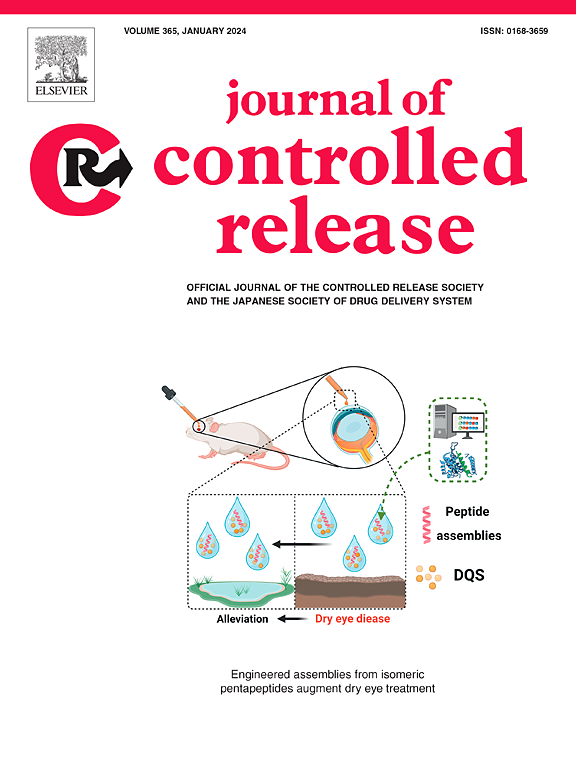Oxidized fucoidan-based nanocomposite hydrogel for cryptotanshinone delivery and prevention of postoperative abdominal adhesions
IF 10.5
1区 医学
Q1 CHEMISTRY, MULTIDISCIPLINARY
引用次数: 0
Abstract
Postoperative abdominal adhesions (PAA) are common diseases following abdominal surgery and can cause various serious complications. The excessive inflammation and oxidative stress are the main causes of PAA formation. Herein, we developed a nanomicellar hydrogel, OFu/HF@CTS, composed of oxidized fucoidan (OFu) and cryptotanshinone (CTS)-loaded hydrazine-functionalized pluronic F127 nanomicelles (HF127@CTS) for the effective prevention of PAA. The hydrogels exhibited satisfactory viscoelasticity, rapid self-healing ability, and good tissue adhesion properties, and were able to slowly release CTS for one week, with a cumulative release rate of 80 % on the 7th day. Additionally, the hydrogels could effectively reduce fibroblast cells and protein adhesions due to the high negative charge of OFu and have good biocompatibility towards RAW 264.7 and L929 cells. Moreover, CTS released from OFu/HF@CTS could efficiently reduce oxidative stress in macrophages and promote M1 macrophages polarized to M2 phenotype to relieve inflammation. In vivo results showed that OFu/HF@CTS hydrogel had good biodegradability and biosafety, and could effectively reduce PAA formation in a rat cecum-abdominal wall abrasion model through the mechanism of alleviating oxidative stress and inflammation, regulating fibrinolysis, and inhibiting fibrosis. This work highlights the therapeutic potential of drug-loaded nanomicellar hydrogels as a preventive strategy for PAA in clinical applications.


求助全文
约1分钟内获得全文
求助全文
来源期刊

Journal of Controlled Release
医学-化学综合
CiteScore
18.50
自引率
5.60%
发文量
700
审稿时长
39 days
期刊介绍:
The Journal of Controlled Release (JCR) proudly serves as the Official Journal of the Controlled Release Society and the Japan Society of Drug Delivery System.
Dedicated to the broad field of delivery science and technology, JCR publishes high-quality research articles covering drug delivery systems and all facets of formulations. This includes the physicochemical and biological properties of drugs, design and characterization of dosage forms, release mechanisms, in vivo testing, and formulation research and development across pharmaceutical, diagnostic, agricultural, environmental, cosmetic, and food industries.
Priority is given to manuscripts that contribute to the fundamental understanding of principles or demonstrate the advantages of novel technologies in terms of safety and efficacy over current clinical standards. JCR strives to be a leading platform for advancements in delivery science and technology.
 求助内容:
求助内容: 应助结果提醒方式:
应助结果提醒方式:


